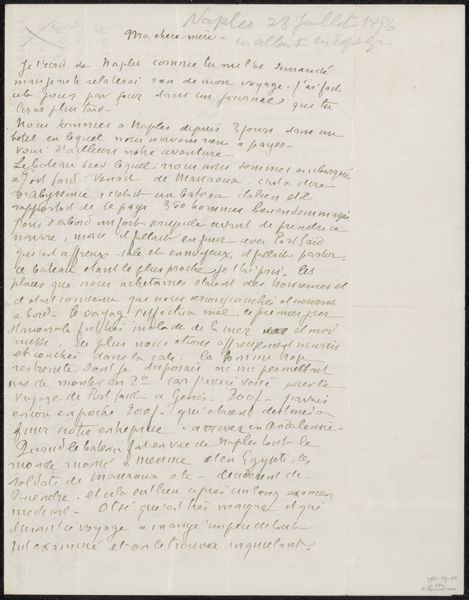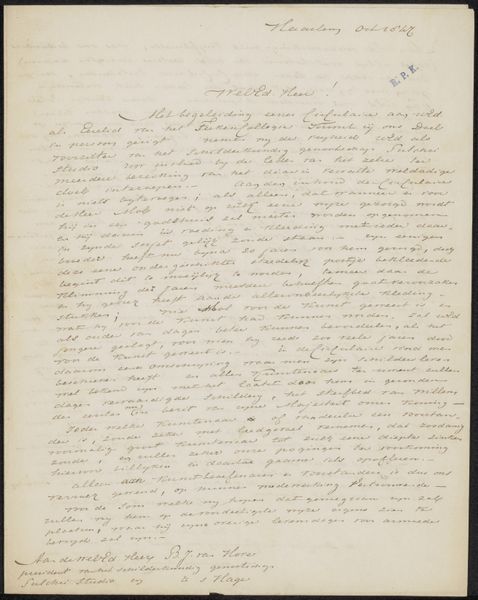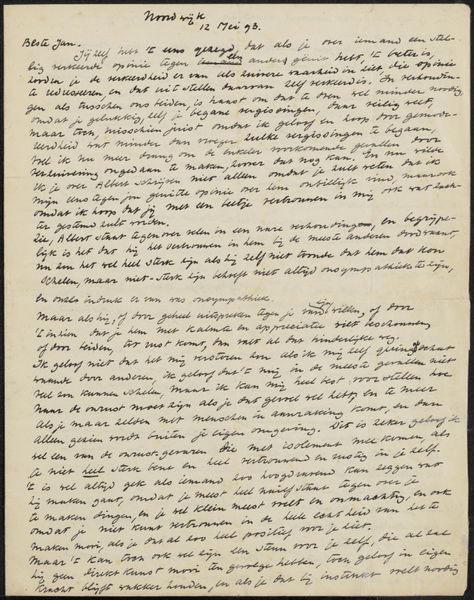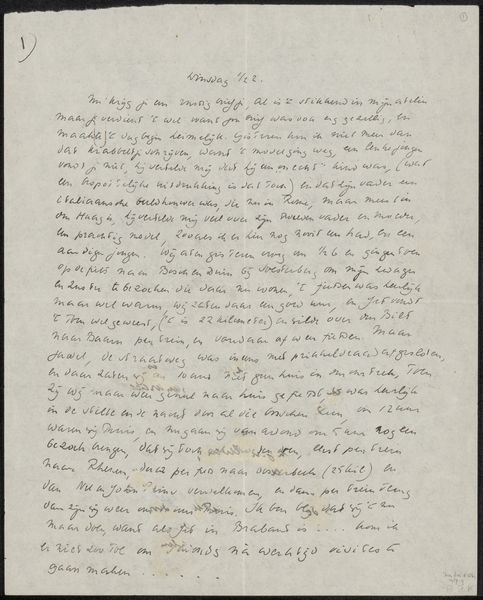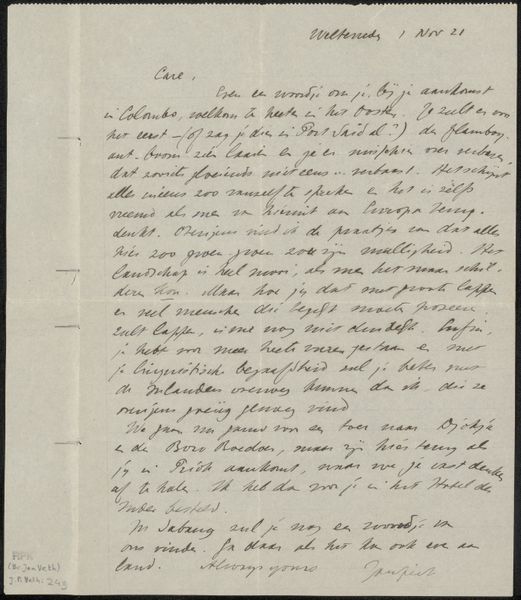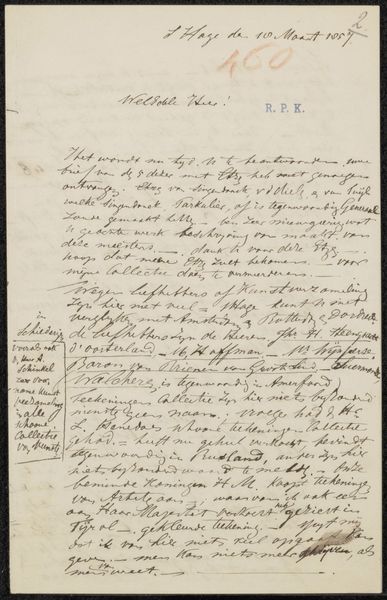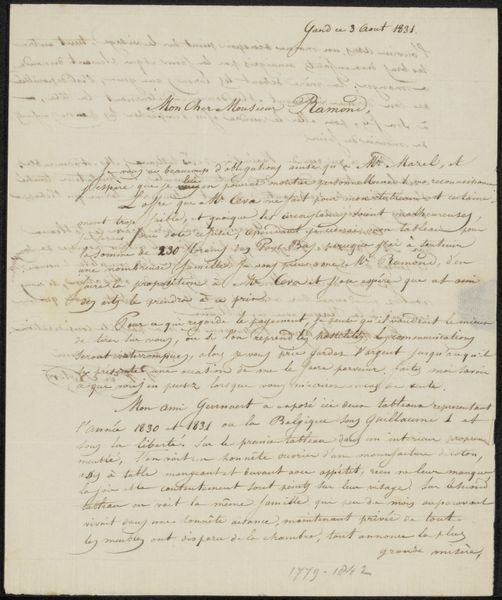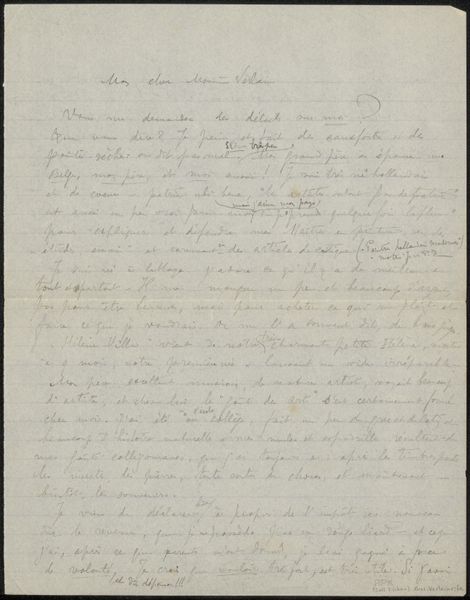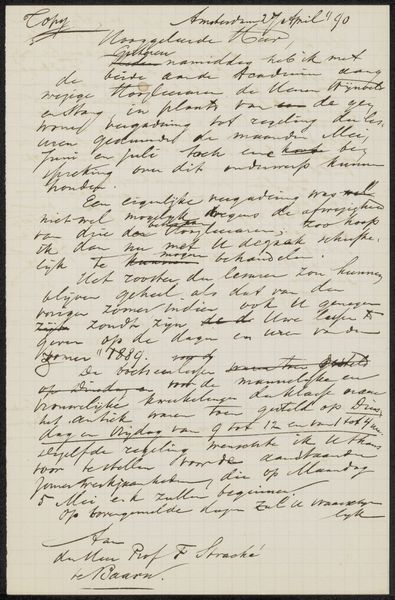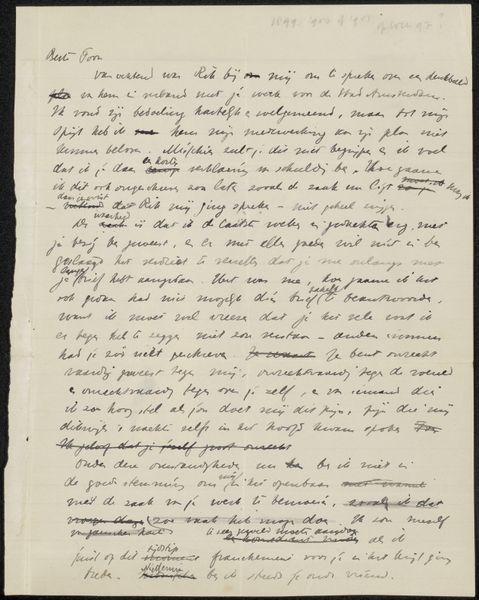
Brief aan Ina van Eibergen Santhagens-Waller c. 1878 - 1938
0:00
0:00
richardnicolausrolandholst
Rijksmuseum
drawing, paper, photography, ink
#
drawing
#
dutch-golden-age
#
paper
#
photography
#
ink
#
intimism
#
modernism
Copyright: Rijks Museum: Open Domain
Curator: This is "Brief aan Ina van Eibergen Santhagens-Waller" a mixed media piece, blending drawing, photography and ink on paper by Richard Nicolaüs Roland Holst, dating somewhere between 1878 and 1938. Editor: It feels intimate. Like catching a glimpse into someone's private thoughts. The handwritten text really pulls you in, even if you can’t read it. The overlapping X marks gives the sense of being cancelled, forbidden. Curator: Holst was deeply involved in the cultural and political circles of his time. This letter provides a snapshot of his correspondence and personal network. Its presence in a museum highlights the enduring fascination with artists’ lives. Editor: The very act of using ink on paper anchors this work to a specific time and place. We know it wasn't typed. It's a physical artifact shaped by his hand and the materials at his disposal. It underscores how writing and making inform thought, shaping its direction and flow. Curator: Exactly. Holst wasn't only an artist; he was also a theorist and writer, which adds another layer. He actively participated in debates about art’s function in society. Perhaps the act of writing *was* his medium here, expressing concepts and theories on a raw, personal level. Editor: I’m drawn to that "cancelled" sensation made by that big cross. It suggests an ambivalence, like the ideas expressed in the letter couldn't stand, were rejected for whatever reason. Holst perhaps challenged prevailing attitudes about artmaking, something he might express clearly in his letter and cross out reflexively. It makes you question art’s role, literally overwriting past visions, pointing to newer perspectives. Curator: Absolutely. Looking at it today, it invites us to reflect on the personal and public dialogues shaping artistic movements, then and now. It really exemplifies modernism as an approach. Editor: Indeed, considering the labor inherent in letter-writing alongside Holst’s apparent struggles with what he’s writing deepens my understanding of art’s messy development. It makes the final works—the sculptures and paintings—all the more meaningful, born out of so many moments of wrestling and refining on paper.
Comments
No comments
Be the first to comment and join the conversation on the ultimate creative platform.
